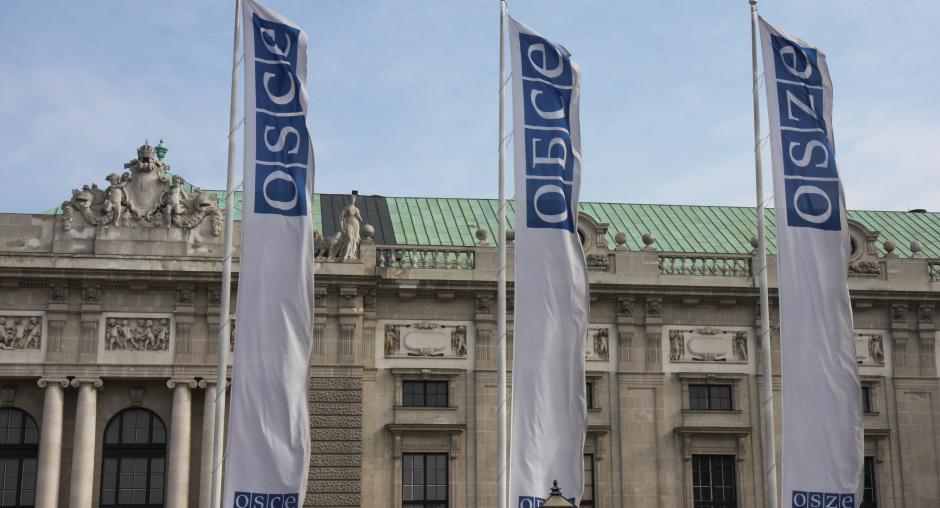OSCE Hosts Tiraspol Talks on Hazardous Chemicals – Mirage News

Report on the Management of Hazardous Chemicals in Moldova and its Contribution to Sustainable Development Goals
1.0 Executive Summary
On 25 November, the OSCE Mission to Moldova, in partnership with the public association EcoContact, convened a public discussion in Tiraspol focusing on the management of dangerous chemicals. The event, part of the extra-budgetary project “Removal and Disposal of Dangerous Chemicals from Moldova,” highlighted significant progress in environmental safety and cross-community co-operation. This initiative directly supports the achievement of several United Nations Sustainable Development Goals (SDGs), particularly those concerning health, environmental protection, and international partnerships.
2.0 Event Overview and Objectives
The hybrid-format event brought together approximately 60 stakeholders to address critical environmental challenges. The primary objectives were aligned with key SDG targets:
- To facilitate the exchange of technical information on hazardous waste management, contributing to SDG 12 (Responsible Consumption and Production).
- To build local capacities for chemical safety, supporting SDG 3 (Good Health and Well-being) by reducing risks from pollution.
- To strengthen co-operation among experts from both banks of the Dniester/Nistru River, advancing SDG 16 (Peace, Justice and Strong Institutions) and SDG 17 (Partnerships for the Goals).
3.0 Technical Discussions and Project Outcomes
Discussions centered on the environmentally sound management of waste containing polychlorinated biphenyls (PCBs), in accordance with international frameworks.
3.1 Adherence to International Conventions
Presentations detailed the technical processes for the collection, packaging, transport, and final disposal of PCBs. These procedures strictly follow the guidelines established by:
- The Stockholm Convention on Persistent Organic Pollutants
- The Basel Convention on the Control of Transboundary Movements of Hazardous Wastes and Their Disposal
This commitment directly addresses SDG 12.4, which calls for the environmentally sound management of chemicals and wastes throughout their life cycle.
3.2 Tangible Environmental Impact
The project’s success was illustrated through videos showcasing a major operational achievement:
- Total Chemicals Removed: Approximately 265 tonnes of dangerous chemicals, including PCBs.
- Collection Sites: Ten locations on both banks of the Dniester/Nistru River.
- Final Disposal: Safe transport to a certified hazardous waste incineration facility in Germany.
This action significantly reduces long-term environmental and health risks, contributing to SDG 3.9 (reduce deaths from hazardous chemicals), SDG 6.3 (improve water quality by reducing pollution), and SDG 11.6 (reduce the adverse environmental impact of cities).
4.0 Alignment with Sustainable Development Goals
The OSCE-led project is a model of multi-stakeholder partnership and a direct contributor to the 2030 Agenda for Sustainable Development.
4.1 Core SDG Contributions
- SDG 3 (Good Health and Well-being): By safely removing and disposing of hazardous chemicals, the project minimizes population exposure to toxins that cause illness and death.
- SDG 12 (Responsible Consumption and Production): The project is a practical implementation of Target 12.4, ensuring the sound management of hazardous waste and reducing its release into the air, water, and soil.
- SDG 16 (Peace, Justice and Strong Institutions): The initiative promotes co-operation and confidence-building between communities on both banks of the Dniester/Nistru River, strengthening institutional collaboration on shared environmental challenges.
- SDG 17 (Partnerships for the Goals): The project is funded by a coalition of OSCE participating States (the United States, Germany, Ireland, and Norway) and implemented through a partnership between an international organization (OSCE) and local civil society (EcoContact), exemplifying a robust global partnership for sustainable development.
5.0 Conclusion
The Tiraspol discussion and the broader OSCE project demonstrate a successful model for addressing environmental hazards through international co-operation and technical expertise. By aligning its objectives with the Sustainable Development Goals, the initiative not only mitigates immediate chemical risks but also builds a foundation for long-term environmental security, public health, and regional stability in Moldova.
SDGs Addressed or Connected
Detailed Explanation
The article discusses a project focused on the management and disposal of dangerous chemicals in Moldova. This initiative directly relates to several Sustainable Development Goals (SDGs) by addressing environmental protection, human health, international cooperation, and capacity building.
- SDG 3: Good Health and Well-being: The removal of hazardous chemicals like polychlorinated biphenyls (PCBs) is crucial for preventing illnesses and deaths caused by environmental pollution and contamination. The project’s goal of reducing environmental risks directly contributes to safeguarding the health of communities on both banks of the Dniester/Nistru River.
- SDG 6: Clean Water and Sanitation: The article mentions the project operates on “both banks of the Dniester/Nistru River.” By safely collecting and disposing of 265 tonnes of dangerous chemicals, the project prevents these substances from contaminating the river and surrounding water sources, thereby improving and protecting water quality.
- SDG 12: Responsible Consumption and Production: This is a central SDG in the article. The entire discussion revolves around the “management of dangerous chemicals” and the “environmentally sound management of chemicals and all wastes,” including their collection, transport, and final disposal, which is a core component of this goal.
- SDG 16: Peace, Justice and Strong Institutions: The project is implemented by the OSCE Mission to Moldova and involves cooperation between experts and communities “on both banks of the Dniester/Nistru River.” This cross-river cooperation on a technical environmental issue serves as a confidence-building measure, promoting collaboration and strengthening institutions in a region with a complex political context.
- SDG 17: Partnerships for the Goals: The initiative is a clear example of a multi-stakeholder partnership. It is funded by several OSCE participating states (United States, Germany, Ireland, and Norway), implemented by an international organization (OSCE), and involves local public associations (EcoContact), academic institutions, and civil society, all working together to achieve a common goal.
Specific Targets Identified
Detailed Explanation
Based on the activities described, several specific SDG targets can be identified as being directly addressed by the project.
- Target 3.9: By 2030, substantially reduce the number of deaths and illnesses from hazardous chemicals and air, water and soil pollution and contamination.
- The article states the project’s purpose is to “reduce environmental risks” by removing “dangerous chemicals, including PCBs.” This action directly mitigates the health risks associated with exposure to such hazardous materials, thus contributing to Target 3.9.
- Target 6.3: By 2030, improve water quality by reducing pollution, eliminating dumping and minimizing release of hazardous chemicals and materials…
- The project’s collection of chemicals from ten locations near the Dniester/Nistru River directly prevents the release of these hazardous materials into the water system, thereby contributing to the reduction of water pollution.
- Target 12.4: By 2020, achieve the environmentally sound management of chemicals and all wastes throughout their life cycle, in accordance with agreed international frameworks…
- The article explicitly details the project’s focus on the “management of waste containing polychlorinated biphenyls (PCBs), including the processes of collection, packaging, transport and final disposal, in line with the procedures set out under the Stockholm and Basel Conventions.” This directly aligns with the objective of Target 12.4.
- Target 17.16: Enhance the global partnership for sustainable development, complemented by multi-stakeholder partnerships that mobilize and share knowledge, expertise, technology and financial resources…
- The project is described as an “extra-budgetary project ‘Removal and Disposal of Dangerous Chemicals from Moldova,’ funded by the United States, Germany, Norway, and Ireland and implemented by the OSCE Mission to Moldova” in cooperation with local entities. This structure perfectly illustrates the multi-stakeholder partnership model promoted by Target 17.16.
Indicators Mentioned or Implied
Detailed Explanation
The article provides specific quantitative and qualitative data that can be used as indicators to measure progress towards the identified targets.
- Indicator for Target 12.4: The article provides a direct quantitative measure of hazardous waste treated. The text states that “approximately 265 tonnes of dangerous chemicals, including PCBs, were collected… and transported… to a certified hazardous waste incineration facility.” This figure serves as a direct indicator of the amount of hazardous waste managed in an environmentally sound manner.
- Implied Indicator for Target 12.4 and 6.3: The clearing of “ten locations on both banks of the Dniester/Nistru River” is an indicator of the geographic scope of the cleanup and the number of contaminated sites remediated.
- Implied Indicator for Capacity Building (related to SDG 16 & 17): The mention of a public discussion that “brought together around 60 participants from academic institutions, research centres, specialised environmental organisations and civil society” serves as an indicator for knowledge sharing and local capacity building efforts.
Summary Table: SDGs, Targets, and Indicators
| SDGs | Targets | Indicators |
|---|---|---|
| SDG 3: Good Health and Well-being | 3.9: Substantially reduce deaths and illnesses from hazardous chemicals and pollution. | Removal of 265 tonnes of dangerous chemicals, reducing environmental and health risks for local communities. |
| SDG 6: Clean Water and Sanitation | 6.3: Improve water quality by reducing pollution and minimizing the release of hazardous chemicals. | Collection of hazardous waste from ten locations on both banks of the Dniester/Nistru River, preventing water contamination. |
| SDG 12: Responsible Consumption and Production | 12.4: Achieve the environmentally sound management of chemicals and all wastes in accordance with agreed international frameworks. | Approximately 265 tonnes of dangerous chemicals collected, transported, and disposed of in line with Stockholm and Basel Conventions. |
| SDG 17: Partnerships for the Goals | 17.16: Enhance the global partnership for sustainable development through multi-stakeholder partnerships. | Project funded by four countries (United States, Germany, Norway, Ireland) and implemented by the OSCE in cooperation with local NGOs and academic institutions. |
Source: miragenews.com
What is Your Reaction?
 Like
0
Like
0
 Dislike
0
Dislike
0
 Love
0
Love
0
 Funny
0
Funny
0
 Angry
0
Angry
0
 Sad
0
Sad
0
 Wow
0
Wow
0



















































.jpg.webp?itok=0ZsAnae9#)
























